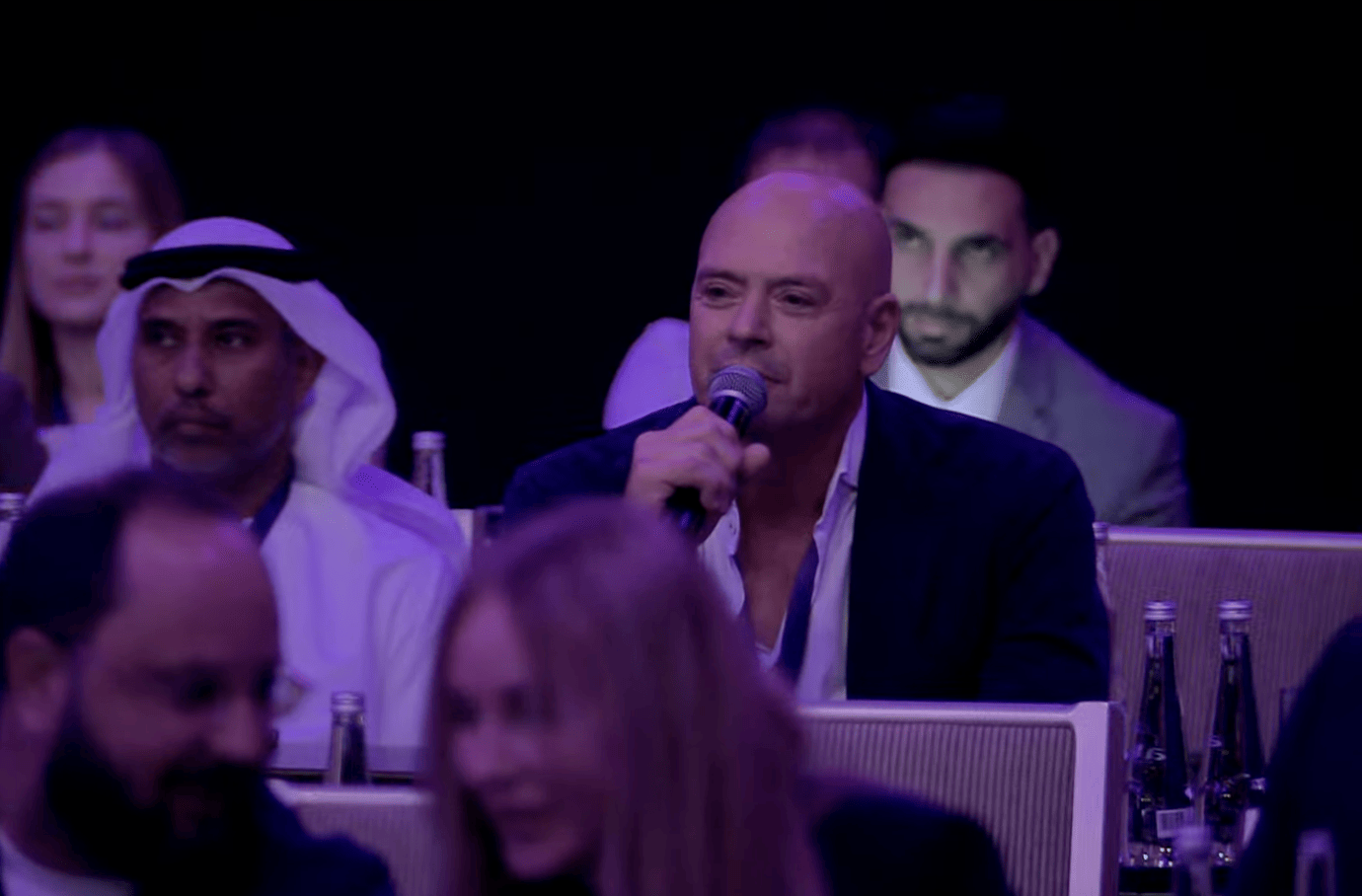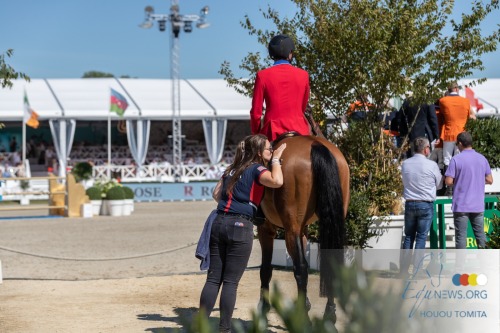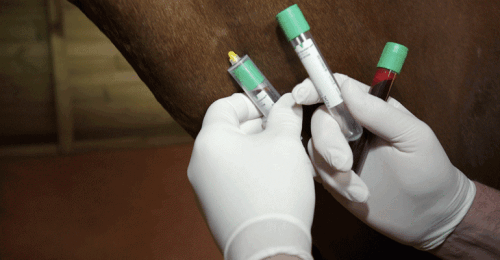From November 10-13 International Jumping Riders Club president François Mathy Jr. represented the club at the FEI General Assembly in Abu Dhabi. The FEI presented first steps in its new welfare strategy. This was debated at length, and Mathy Jr. played an active role.
“Physical and emotional stress are simply part of every sport,” said Mathy Jr., during the welfare session. “You want a strict set of rules for horse welfare, but you must also take into account the reality of the sport. In your [the FEI’s] current research, you want to be able to identify signs of stress and emotion and, if necessary, punish them. But sport is simply a combination of factors, including stress and emotion. What is actually the goal of this approach?”
Reflecting on the General Assembly this week, Mathy Jr. feels the FEI's current emphasis is going a little too far.
"The more we suggest to the outside world that we have many things to solve, the more the wider public starts to think all riders try make the horse feel uncomfortable, when we who live with our sport every day all know that a horse will perform better when it is not under stress and is happy - that is nothing new," said Mathy Jr.
"The more we suggest to the outside world that we have many things to solve, the more the wider public starts to think all riders try make the horse feel uncomfortable, when we who live with our sport every day all know that a horse will perform better when it is not under stress and is happy - that is nothing new," said Mathy Jr.
"The FEI must be there to set boundaries - but now it feels like they are telling us, every single moment, what we can do. They appear to want to measure everything objectively, including physical and mental stress, and maybe even to find a way of punishing that. That is why I wanted to be sure that the FEI recognises that physical and emotional stress is part of all sport."
Mathy Jr. highlights several proposed or already actioned FEI rule changes that started with good intentions but are problematic in their application.
Noseband measurement
Mathy Jr. highlights several proposed or already actioned FEI rule changes that started with good intentions but are problematic in their application.
Noseband measurement
The new FEI-approved noseband tightness measuring tool will not come into use till May 2025, for distribution and manufacturing reasons. It has already met pushback from riders in several disciplines, over the method of passing the tool under the noseband and the data-led decision to measure at the front of the horse's face, ie over the boney area, rather than between noseband and the fleshier cheeks.
The president of IJRC attended an official testing trial in conditions simulating a competition environment, but which he says can never account for a real-life, highly-charged showground atmosphere, or the steward being short of time.
"We understand what the FEI wanted to address, but you could have a very hot horse, some are more stressy and hectic in some situations. Everything is set in stone with the same rule for everyone, but we are dealing with horses who are all different" says Mathy Jr.
"It was only as recently as last year's General Assembly that we were discussing that two small fingers or two fat fingers under the noseband on the side of the horse's head is a quite easy and friendly way to make sure the noseband is not too tight. There was not really anything to solve from the previous system."
Elimination
Concerning the elimination for blood on the horse in certain situations Mathy Jr. feels more discretion is essential in very minor cases where there was clearly no intent. Mathy Jr. cited the elimination of Pedro Veniss at the Olympic Games in Paris, when his horse Nimrod de Muze showed what the FEI describes as ‘micro blood’ on his flanks at the post-round check. This had the effect of taking the Brazilian team out the jumping competition, because there is no longer a drop score.
The FEI announced that ‘elimination under this rule does not imply that there was any intention to hurt or harm the horse.’ But the wider public is unlikely to have read that statement, and is more likely to form a negative opinion.
"No-one wants to see a horse with blood on the sides, for sure, but the consequences of elimination are also very bad for the image of the sport," said Mathy Jr. . "To be eliminated from the Olympics the perception is you must have done something really bad; the public will see this as mistreatment."
The FEI announced that ‘elimination under this rule does not imply that there was any intention to hurt or harm the horse.’ But the wider public is unlikely to have read that statement, and is more likely to form a negative opinion.
"No-one wants to see a horse with blood on the sides, for sure, but the consequences of elimination are also very bad for the image of the sport," said Mathy Jr. . "To be eliminated from the Olympics the perception is you must have done something really bad; the public will see this as mistreatment."
"Ours is an action sport. If there is a little scratch, no more than a bite from a fly, which is unintentional and requires no veterinary attention, then elimination is a huge consequence, and unfairly disproportionate."
The IJRC has previously made representations about the jumping rule introduced in 2023 (Article 241.4) enabling a ground jury to eliminate riders or horses that appear to be in difficulty.
"Yes, you want the possibility to eliminate as there will always be those difficult cases? But the way it is written, they can eliminate if you for example lose your stirrup at the first fence, in case it becomes dangerous," said Mathy Jr. . "One, in a discussion, a video was shown of a horse losing its bridle; should judges ring the bell or not? But even if you ring the bell do you think the horse will stop and everything will be OK? At some point the FEI must take a stand and say, we are the professionals; we know the horse."
The double bridle
The IJRC has previously made representations about the jumping rule introduced in 2023 (Article 241.4) enabling a ground jury to eliminate riders or horses that appear to be in difficulty.
"Yes, you want the possibility to eliminate as there will always be those difficult cases? But the way it is written, they can eliminate if you for example lose your stirrup at the first fence, in case it becomes dangerous," said Mathy Jr. . "One, in a discussion, a video was shown of a horse losing its bridle; should judges ring the bell or not? But even if you ring the bell do you think the horse will stop and everything will be OK? At some point the FEI must take a stand and say, we are the professionals; we know the horse."
The double bridle
The FEI is not changing dressage rules which mandate the double bridle in upper level Grand Prix. However, the FEI Dressage Technical Committee recently stated it would support the trialing of special Grand Prix classes up to CDI3* for those who wish to use a snaffle bridle.
"Every person who has ridden in a double bridle knows that used properly it can in fact be one of the mildest bits," said Mathy Jr. . "If you put in an optional rule just because the public demands it, you will unintentionally create a different conflict: to the public there will in future be two groups in dressage - the 'bad' riders who continue to use the double bridle and the 'good' ones using the snaffle."
All these points will be discussed again next year, when the FEI jumping rulebook will undergo its four-yearly full review. For this reason, the IJRC will undertake a lot of work in the coming months to ensure the necessary changes are approved at the FEI GA to take effect from January 1, 2026.
"Every person who has ridden in a double bridle knows that used properly it can in fact be one of the mildest bits," said Mathy Jr. . "If you put in an optional rule just because the public demands it, you will unintentionally create a different conflict: to the public there will in future be two groups in dressage - the 'bad' riders who continue to use the double bridle and the 'good' ones using the snaffle."
All these points will be discussed again next year, when the FEI jumping rulebook will undergo its four-yearly full review. For this reason, the IJRC will undertake a lot of work in the coming months to ensure the necessary changes are approved at the FEI GA to take effect from January 1, 2026.



